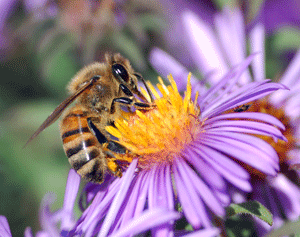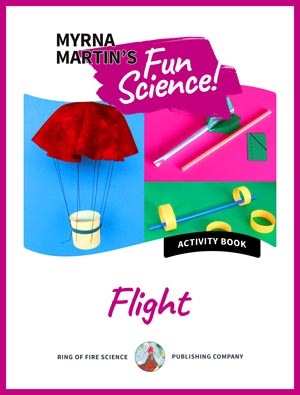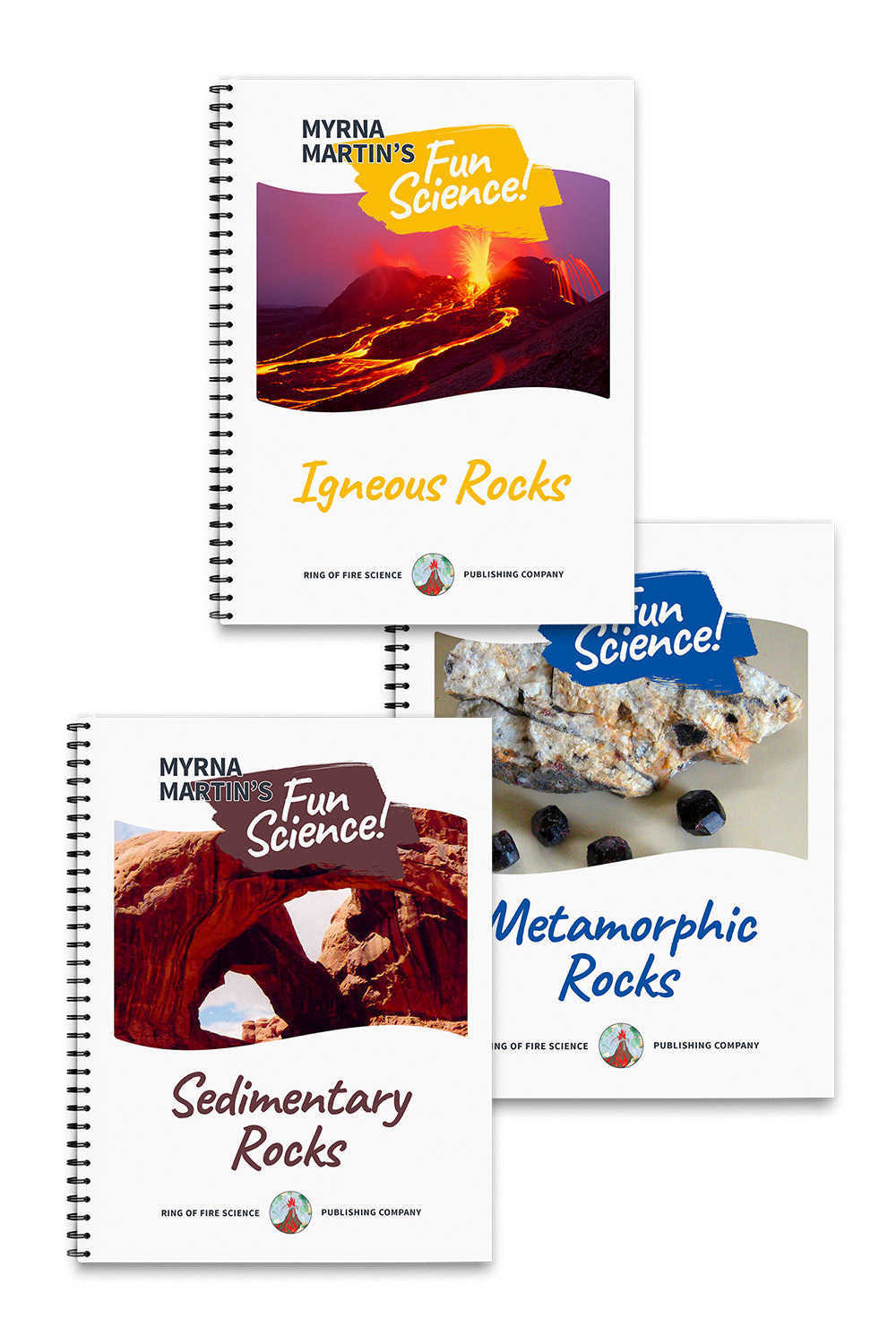Science Articles for Kids
Traveling Honey Bees
Science Articles for Kids The first European honeybees traveled across the Atlantic Ocean with early colonists to the United States in 1620. These European bees (honeybees) were so successful that today farmers depend on honeybees to pollinate one hundred major crops produced in the United States. This single species of bees is the most important insect in the United States because farmers depend on them to pollinate 30% of the food crops they produce.

Honey bee pollinating flowers
Honeybees living in hives on the back of trucks travel around the country from February through November pollinating plants. Beekeepers converge on the Central Valley of California bringing over 1.5 million hives to pollinate their almond trees. Bees from all parts of the country mingle together on the 800,000 acres of almond orchards in the valley. Sick bees and healthy bees fly around the trees pollinating the flowers. The farmers need this great influx of bees to pollinate all the trees because there are not enough wild bees in the area to pollinate the trees.
Beekeepers pile their hives on their trailers and head for other areas where the crops are starting to bloom and the honeybees are need to pollinate the plants. During the spring and summer months some beekeepers are called to come to the blueberry field in Michigan and the cranberry bogs in Wisconsin. Others travel to Texas where the bees are kept busy pollinating watermelons, cantaloupes and cucumbers. During the fall they also pollinate the pumpkins raised in Texas.
Beekeepers in the summer months head to North and South Dakota where the farmers need them. The bees pollinate large areas of alfalfa, clover and sunflowers in these two states. It is during the summer that bees produce the bulk of the honey they make during the year.
Beekeepers are kept busy up and down the state of Florida during several months of the years because the state varies from a subtropical climate to a tropical climate. They start in February with the blueberry crop and end in September pollinating the Brazilian pepper trees. Beekeepers also travel up and down the East Coast visiting farmers who need their bees to pollinate the apples, cherries, pumpkins, blueberries, cranberries, lettuces and other vegetables. All this travel is hard on the honeybees.
More science News
Current Events in Science - Talks about the Antarctica ice sheet and how they are gathering water from subglacial lakes, how mud samples.
Current Events in Earth Science - Find out about ancient petroglyphs found above Pyramid Lake, a playa, in Nevada that are thought to be the oldest in North America.
Kids Current Events - Learn how people living in rural communities in India are using Solar Energy Carts so they can work in the evenings.
Science Articles for Kids - Find out about the honey bees that travel around the United States pollinating farmer’s crops.
Science Trivia – This page includes fun stuff about the world we live in including Early Maps, Sailing Ships, Arctic Circle, and Amphibians.
Science Inventions - Bakelite was the first modern plastic. Its slogan was the material with 1000 uses. Collectors love jewelry made from Bakelite.
Science Current Events - Find links to the latest current events in Earth Science and science news on this webpage.
Kids Fun sCIENCE bOOKSTORE
Check out Myrna Martin's award winning textbooks, e-books, videos and rock sets. The Kids Fun Science Bookstore covers a wide range of earth science topics. Click here to browse.
Sign up to our monthly newsletter and receive our FREE eBook containing 3 fun activities that don’t appear in any of our other books!
The Kids Fun Science monthly newsletter will include the following: current events, weird and fantastic facts, a question of the month, science trivia and the latest new content from our website.
We respect your privacy and you can be assured that we will never share your email address or use it for any other purpose than to send you our newsletter.









